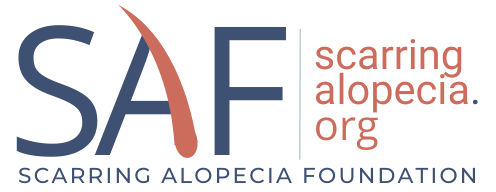Oral Low-Dose Naltrexone in the Treatment of FFA and LPP
Article Summary by Wonder Edem, MS3 | MD Candidate | University of California, Riverside School of Medicine
Lichen planopilaris (LPP) and Frontal Fibrosing Alopecia (FFA) are one of the most common forms of scarring hair loss. Considering limited treatments for both LPP and FFA, Dr. Caroline Mann’s team at the University of Washington St. Louis explored an emerging treatment option, oral low dose naltrexone (LDN) for LPP and FFA. Although LDN is FDA approved to treat opioid dependence and alcohol use disorder, it also has been used to treat several other conditions, such as itching, chronic pain, etc. In several case series and anecdotal evidence, LDN has been shown to reduce pain at the scalp, itching, scalp inflammation, and disease progression of LPP and FFA.
This study recruited 43 adult patients with LPP and FFA, who were followed at 3, 6 and 12 months to assess their clinical responses to 3mg/day of LDN. 26 patients completed one year of LDN treatment and 2 month follow up assessments. The clinical assessment for each visit measured the patient’s reported severity of scalp itching and burning/pain, then the physician determined redness and other signs of disease activity of the involved area. Throughout the study, patients were able to continue the treatment they were already undergoing for LPP and FFA, including doxycycline, hydroxychloroquine, topical or intralesional steroids, but did not start anything new.
Majority of the participants of the study were female (95%), average 65 years old, 95% white, 5% black. 81% of patients had FFA, 14% LPP, and 5% with both FFA and LPP. In the analysis, scalp redness had a significant decrease at 12 months (~1 point out of 0-3 point scale). While some patients reported benefits, no meaningful difference was observed in itching, burning/pain, and size of the scalp involvement.
LDN was well tolerated in general. Among reported side effects from 14/34 patients that took at least one dose of naltrexone, vivid dreams and headache were the most common. Five patients dropped out of the study due to adverse events.
Overall LDN can be considered an additional therapy to add for treating prominent redness in LPP and FFA, and possibly itching/burning sensation. The study is limited because of the possibility of spontaneous stabilization, benefit from concurrent medications, and mild subjective symptoms at baseline. Future research is encouraged to investigate additional benefits of LDN in scarring alopecia.
For the full article, click here.
References
1. Hamel RK, Chen L, O’Connell C, Mann C. Oral Low-Dose Naltrexone in the Treatment of Frontal Fibrosing Alopecia and Lichen Planopilaris: An Uncontrolled Open-Label Prospective Study. Cureus. 2023 Jan 24;15(1):e34169. doi: 10.7759/cureus.34169. PMID: 36843712; PMCID: PMC9950001.
